Future of Plastics
The world can’t seem to go a day without it…
8 Alternatives to Single-Use Plastics
(Updated November2021)
From cell phones to automobiles, the modern world we take for granted owes much of its existence to plastic. And though we may have plastic to thank for spurring such grand innovations, many of us have started to realize there’s a lot of bad to go along with the good.
More than 8 billion tons of plastic are estimated to have been produced[1] since the first manmade plastic, Parkesine, was patented in 1862.[2] After use, most of these plastics have found themselves in landfills, rivers, and oceans. Many of the most polluted waterways are in the most densely populated countries, such as China and India.
While more research is needed to determine the amount of plastic pollution in freshwater systems, it is estimated that 9.5 million tons of plastic enter the ocean each year.[3]
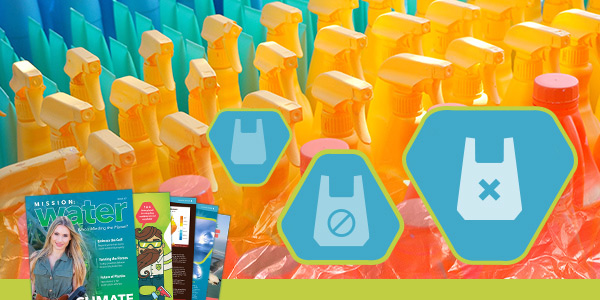
Of this waste, plastic drinking bottles, food wrappers, and plastic grocery bags are estimated to be some of the biggest contributors. In the world’s oceans, these plastics break down over decades into microplastics invisible to the human eye.
They get mistaken as food by marine creatures including seabirds and sea turtles. Eventually, the impacts of poor nutrition and plastic consumption by the creatures are felt up the food chain. The threat to human health is serious enough that the World Health Organization is calling for more research into human absorption rates of microplastics.[4]
Because of its broad applicability to an incredible array of products and services, the use of plastics continues unabated. Despite the large number of consumers who realize that plastic pollution is a problem, recycling rates are still low. In 2018, the overall U.S. recycling rate for plastic bottles was 28.9%, a decline from 29.3% the year before.[5]
A common refrain for years has been to reduce, reuse, and recycle. But improving recycling rates is something that still requires considerable effort. Recycling relies on changing human behavior, whereas replacing plastics with more sustainable options would more directly mitigate our overreliance on plastics. Here are eight potential solutions to our plastic addiction!
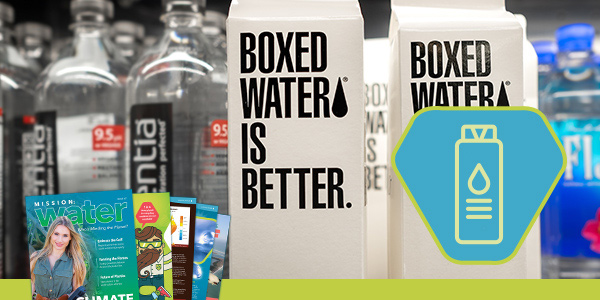
Photo Credit: cdrin / Shutterstock.com
1) Boxed Water
Boxed water cartons are made largely of paper products that can be recycled. Their high paper content means they are dependent on trees, a renewable resource. Combined with responsible paperboard sourcing, the added benefit is also forest stewardship.
A potential downside to boxed water is that, not including the paper involved, the cartons still contain some lining materials that are difficult to recycle. These are challenging for some communities to handle, as some have programs to recycle boxed water linings whereas others do not. Still, boxed water cartons are single-use water containers, which aren’t good for the environment, so it might be best to just stick with a reusable bottle and tap water.
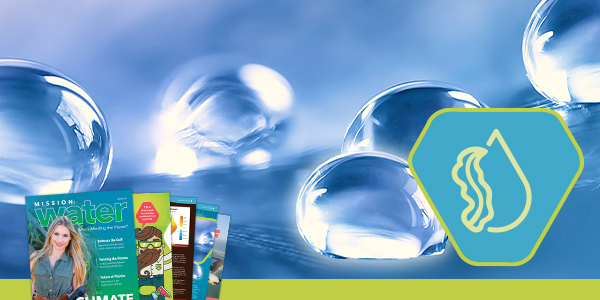
2) Edible Seaweed Pouches
These squishy, edible pouches are created by encasing blobs of drinking water within edible membranes, commonly made of natural seaweed. Seaweed works well because it grows up to 1 meter per day and it doesn’t compete with food crops. The pouches biodegrade within four to six weeks if left unused,[6] which is an incredible improvement over the hundreds of years plastic bottles need to degrade.
Rather than a plastic water bottle, thirsty runners entering mile 23 at the 2019 London Marathon were provided seaweed pouches filled with a sports drink. By using these edible and biodegradable pouches, race organizers were able to reduce the number of plastic bottles used from 920,000 in 2018 to 704,000 in 2019.[7]
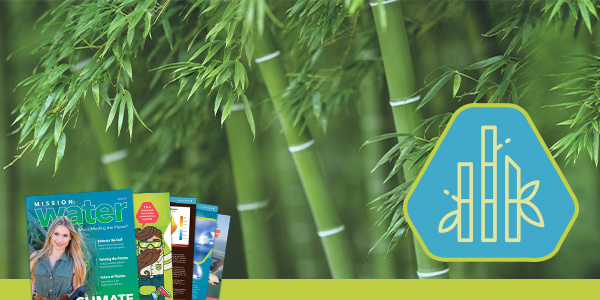
Photo Credit: cdrin / Shutterstock.com
3) Bamboo[8]
It is estimated that more than 100 million plastic utensils are used each day in the United States. One promising alternative is bamboo cutlery.
There are many advantages to using bamboo. It grows rapidly—up to five feet per year! Bamboo is a grass, so replanting is not necessary after harvesting. It is also naturally antibacterial, and cutlery made from it is non-toxic. Finally, bamboo cutlery can be composted after use—it decomposes in less than three months, depending on the conditions.
In addition to cutlery, bamboo can also be used to produce straws, clothing, and bioethanol fuel.
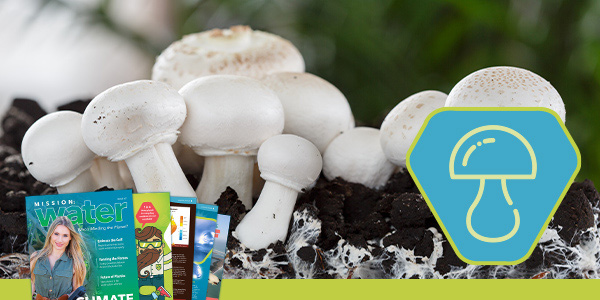

4) Mushroom Packaging[9]
Mushroom-based packaging material can be grown within a week in a controlled environment. It is durable and has reasonable production costs. Unlike Styrofoam, it only takes a few weeks to decompose completely.
Agricultural waste such as husk, oat hulls, and cotton burrs serve as the raw material used to produce mushroom packaging.
The raw material is pressed into the desired shape, then seeded with mushroom spores. After a few days, the spores sprout mycelium that thread through the material, ultimately binding it all together. The new packaging material is heat-treated to kill spores and prevent further growth.
Due to the benefits of mushroom-based packaging, companies like IKEA have announced it will use it to replace Styrofoam for all its products.
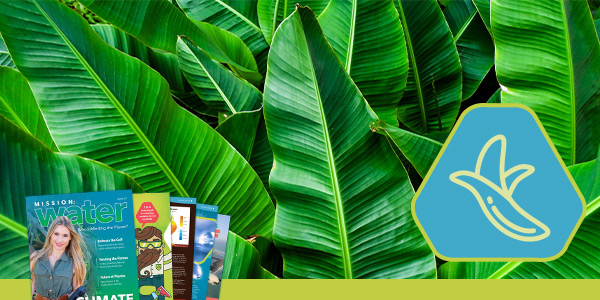
5) Pressed Hay and Banana Leaves
Straightforward options for replacing plastic packaging include those that use plants to wrap goods and products. Two of the most popular are pressed hay and banana leaves. Both are highly sustainable and compostable because they’re plants.
In a supermarket, it’s hard to not see products that are shipped in pressed hay, like eggs, or those wrapped in banana leaves, like veggies. Because of this, the plastic alternatives help to communicate to consumers that they’re environmentally friendly options from the outset.[10] These options are relatively new in the realm of alternatives to single-use plastics, but both are gaining in popularity.
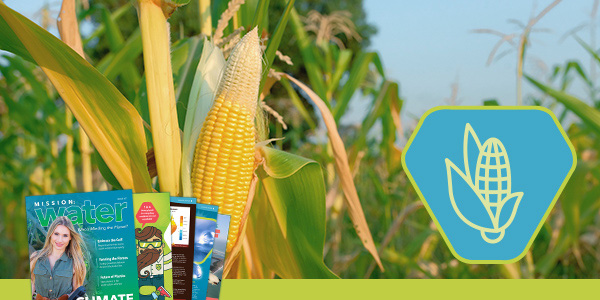
6) Corn-Based Plastics[11]
Polylactic acid, from corn, has great potential for helping ease the burden of single-use plastics. Made from a renewable resource and recyclable, corn-based plastics are environmentally sustainable and easy to explain to those skeptical of green packaging.
In large-scale applications, corn-based plastics are formed into puffy resin pellets that can be manipulated into any shape. Some large companies, distributors, and retailers, including multinational grocery store chains, have started to use corn-based plastics in their inventories.
This single-use plastic alternative is making strides and is environmentally friendly, but composting it is challenging. It can biodegrade over a period of 90 days, but only within industrial facilities that apply microbes and heat for long periods of time—backyard composting simply won’t do the trick.
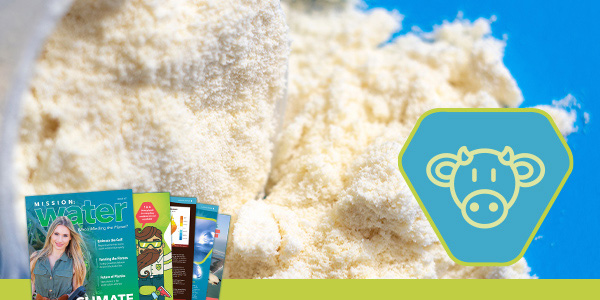
7) Casein, Milk Protein[12]
Another alternative to plastics is the use of casein, a protein found in milk. Packaging produced from casein is far more environmentally friendly than plastic—it is biodegradable, sustainable, and even edible.
The plastic used to wrap many food products cannot be recycled and is not biodegradable. These films are also not very effective at preventing food from spoiling and may even leach chemicals into the food they protect.
In contrast, casein films are very effective in preventing food spoilage—they are 500 times better than plastics at keeping oxygen away from food. This breakthrough technology could go a long way in keeping food products fresh while also reducing the amount of plastic flowing into our landfills and the environment.
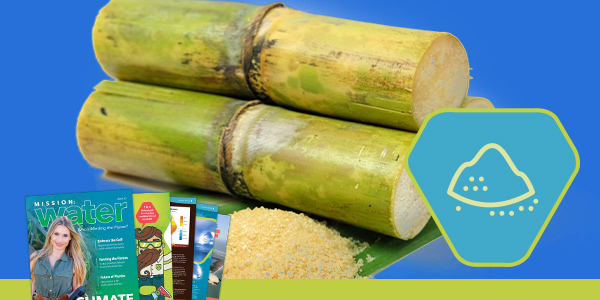
8) Bagasse[13]
Bagasse is a byproduct of sugarcane processing, which leaves a pulpy substance that can be used in various applications. These include using bagasse as a biofuel and as a wood substitute in the production of pulp, paper, and board. Bagasse is also often used in the production of food packaging, including "to-go" containers, bowls, plates, and cups.
There are many benefits of bagasse packaging. Bagasse is generated from annually-renewable resources, and the packaging is completely biodegradable and compostable. Under the right conditions, packaging can degrade in as little as four weeks.
Bagasse food containers are thick and very sturdy. They are microwave safe, can be used to store food in the freezer, and are free of chlorine.
Sources
1 | Science Advances, Production, use, and fate of all plastics ever made
2 | Science Museum, The Age of Plastic
3 | IUCN, Primary Microplastics in the Oceans: a Global Evaluation of Sources
4 | World Health Organization, WHO calls for more research into microplastics and a crackdown on plastic pollution
5 | American Chemistry Council and Association of Plastic Recyclers, US National Postconsumer Plastic Bottle Recycling Rate Report
6 | NOTPLA, Technology
7 | The Washington Post, The London Marathon’s method for reducing plastic bottles: Edible seaweed pouches
8 |EcoRoots, Bamboo Cutlery | Why you should make the switch
9 | Medium, IKEA Starts Using Biodegradable Mushroom-Based Packaging for Its Products
10 | Forbes, Thailand Supermarket Ditches Plastic Packaging for Banana Leaves
11 | Smithsonian Magazine, Corn Plastic to the Rescue
12 | American Chemical Society, Edible food packaging made from milk proteins
13 | EcoPack, Everything You Need to Know About Bagasse
